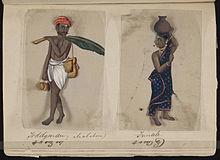By:Surinder Jain, 2nd July 2018.
It is known what the word caste used so commonly in India comes from ‘casta’ in Portuguese. In Spanish America (and many other places), racial categories were formal legal classifications. Racial categories had legal and social consequences, since racial status was an organizing principle of Spanish colonial rule.
The system of castas was more than socio-racial classification. It had an effect on every aspect of life, including economics and taxation. Both the Spanish colonial state and the Church required more tax and tribute payments from those of lower socio-racial categories.[1][2]
Spanish ideas about purity of blood (which historically also related to its reconquest of Spain from the Moors), the colonists established a caste system in Latin America by which a person’s socio-economic status generally correlated with race or racial mix in the known family background, or simply on phenotype (physical appearance) if the family background was unknown.
Other methods of categorization were based on the degree of acculturation to Hispanic culture, which distinguished between gente de razón (Hispanics, literally, “people of reason”) and gente sin razón (non-acculturated natives), concurrently existed and supported the idea of the racial classification system. Castas is a Spanish word that is used in New Mexico history to describe pueblo people and New Mexicans. During the seventeenth and eighteenth centuries, European elites created a complex hierarchical system of race classification.
Cagots (a minority found in the west of France and northern Spain) were forced to use a side entrance to churches, often an intentionally low one to force Cagots to bow and remind them of their subservient status.[10] This practice, done for cultural rather than religious reasons, did not change even between Catholic and Huguenot areas. They had their own holy water fonts set aside for Cagots, and touching the normal font was strictly forbidden.[11] These restrictions were taken seriously; in the 18th century, a wealthy Cagot had his hand cut off and nailed to the church door for daring to touch the font reserved for “clean” citizens.[12]
Cagots were expected to slip into churches quietly and congregate in the worst seats. They received the host in communion only at the end of a stick. Many Bretons believed that Cagots bled from their navel on Good Friday.[7]

A page from the manuscript Seventy-two Specimens of Castes in India, which consists of 72 full-color hand-painted images of men and women of various religions, occupations and ethnic groups found in Madura, India in 1837, which confirms the popular perception and nature of caste as Jati, before the British made it applicable only to Hindus grouped under the varna categories from the 1901 census onwards.
It is this system of “casta” that was applied by the British in India to classify Indian society into castes and then mistakenly assumed a caste (jati) to be a part of the four varnas.
(credit:wikipedia)
[Click here to read more ….] and [Click here to read even more ….]

